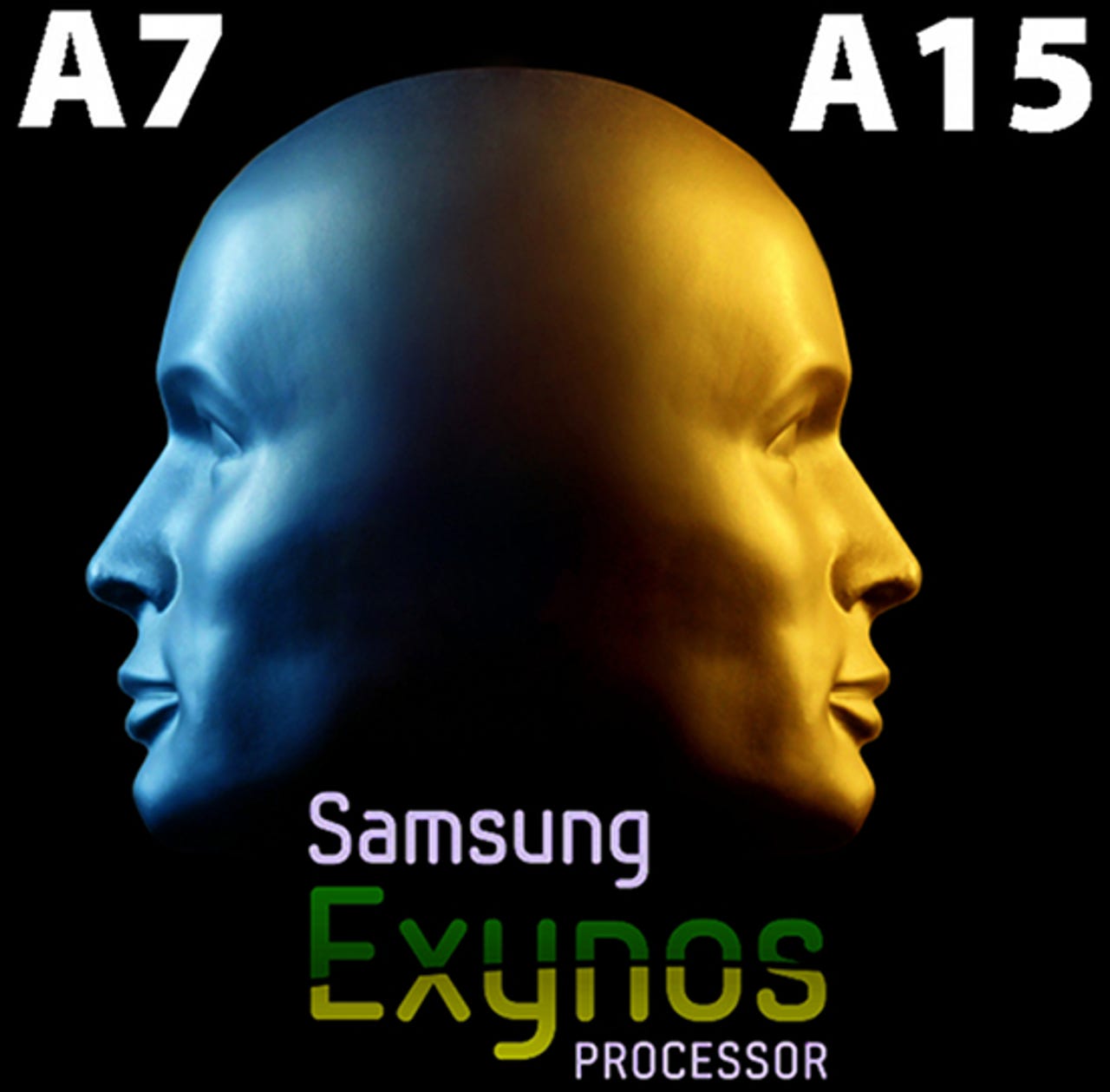Why your next ARM chip might have multiple personalities


Yesterday, I wrote a bit about how Samsung is becoming a leader in tablet and smartphone manufacturing because it now has the vertical integration capability to design products in an end-to end fashion, using its own chip designs.
Samsung doesn't just have the ability to produce chips under licenese from other companies with its own semiconductor foundries -- it can also produce its own unique System on a Chip (SoC) designs and combine them with other in-house designed and manufactured components, such as displays, memory, flash storage, wireless chips and even batteries in order to create much more inexpensive mobile devices than ever before.
The best examples of this can be found in the recently launched ARM-based Chromebook as well as in Google's Nexus 10 tablet, both of which feature Samsung's home-grown Exynos 5 (5250) SoC.
The Exynos 5 has the distinction of being the first mass-market SoC to utilize the latest-generation ARM Cortex-A15architecture, which is a powerful, superscalar design with cores running at very high clock speed and connected to larger amounts of cache (1.7Ghz, 2MB).
It brings unprecedented performance and power efficiency to the Android and Chrome OS platforms like never seen before.
However, the Exynos 5 is not without its limitations. While the ARM Cortex-A15 architecture is powerful, it is not as power-miserly as other ARMv7-compatible chip designs, such as as those which use less-powerful and much slower-clocked groups of ARM Cortex-A7 cores connected to smaller amounts of cache (600Mhz/512).
Certain types of tasks, for example, such as MP3 and video playback and simpler apps (such as an email or twitter client) are better suited to a lower power, "Little" and slower processor core like the ARM Cortex-A7. But large calculations and large memory operations, such as dealing with 2D and 3D HD graphics, or rendering rich web content are better suited to the ARM Cortex-A15.
Earlier this year, ARM Holdings, the company which licenses the ARM Cortex architecture to companies like Samsung, Apple, Qualcomm, NVIDIA and Texas Instruments which produce their own CPU designs announced a hybrid system called big.LITTLE Processing.
What big.LITTLE would provide in the future of ARM-based SoCs is nothing short of remarkable. It would combine the superscalar processing power of the Cortex-A15 with the energy-efficient capabilities of Cortex-A7 systems.
So who is going to be the first to come out with a big.LITTLE ARM SoC? Why, that would be Samsung.
At the 2012 Korea Linux Forum, a Linux Foundation event, Samsung presented a very technical presentation on the future of their Exynos processors, currently dubbed the "Exynos.bL". Presumably, this is a glimpse at Exynos 6 or Exynos 7.
While the subject matter of that presentation is extremely, shall we say, "Maxi-Zoom Dweebie sort of stuff", the meat of the presentation describes a chip that is a hybrid of ARM Cortex-A7 and ARM Cortex-A15, tied together in a cluster of 4 "Big" and 4 "Little" CPU cores, using a cache coherent processor interconnect and interrupt controllers.
The hardware is driven by some very sophisticated tweaks to the mainline Linux kernel's CPU scheduler code, which is being done by the folks over at Linaro. The scheduler can dynamically switch/migrate workloads between the two clusters of chips according to the size or complexity of the operation.
The overall concept of mixing different types of processors in a computer is not new -- what is being described is a form of Asymmetric Multiprocessing, which has been implemented on a number other systems in the past, and is also the way that CPUs offload tasks to GPUs today.
However, the concept is quite new to Linux and to ARM, particularly when mixing different types of CPUs. And what it could do to affect the future of personal computing and mobile devices is significant.
Using this method, these hybridized, dual-personality ARM-chips that use a mix of Big and Little cores would give us the best of both worlds: The performance that we normally see on much more power hogging desktop and server chips, but with the power efficiency of an embedded system.
Because the scheduler work is being done on Linux first, we're going to see these types of chips appear initially on Android devices and perhaps even low-power Linux servers, and it would not be surprising to see them appear sometime next year, or in early 2014. Samsung will almost certainly be first to market with them.
The big.LITTLE IP can obviously be licensed by any ARM architecual licensee, so Apple and Microsoft could both potentially produce versions of their respective mobile operating systems that take advantage of this new architecture. If they are working on it, they certainly aren't talking about it in public.
But this is not to say that Apple might not have a big.LITTLE trick up its sleeve in 2014 when rolling out new iPhones and iPads with future versions of the A-series SoC, or that a future Microsoft Surface or Windows Phone 8, powered by Exynos.bL or a competitor's chip design using the architecture might come to fruition as well.
Will these new "dual personality" ARM chips create even more powerful and energy efficent mobile devices? Talk Back and Let Me Know.
Note: an earlier version of this article contained information about system endianism, this material has been redacted because it is not relevant to the subject matter.